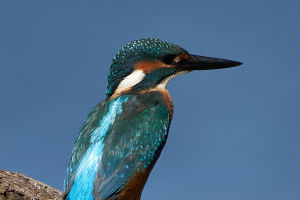In March 2020, staff at Nature Reserve in Kenya, Africa, discovered two white giraffe carcasses that had gone white, leaving only the last white giraffe left in the world.
According to the staff's investigation, the two giraffes (an adult female and a cub) were killed by poachers.
This news has sparked widespread concern.
It also gave people a new perception.
In addition to African elephants, rhinos and other animals threatened by poachers, giraffes have not escaped the clutches.
And after scientists have found that not only the albino giraffe, but also the common giraffe is now disappearing step by step.
If this continues, the tallest surviving species, the giraffe will disappear.
Status of the giraffe
Giraffes are a species unique to Africa, and back before 2016 scientists divided giraffes into nine different subspecies based on subtle differences in morphological structure and physiology.
However, in 2016, scientists re-used genetic sequencing to make new taxonomic discoveries about wild giraffes.
There is not just one species of giraffe, but three: the northern giraffe, the southern giraffe, and the Masai giraffe.
There are five subspecies under the northern giraffe.
The southern giraffe and the Maasai giraffe each have two subspecies.
Thus, there are still nine subspecies of giraffe, but they belong to three different giraffe species.
Giraffe is the tallest animal in existence, there is no one.
As an adult, giraffes can reach a height of 8 meters and weigh up to 700 kilograms.
As the saying goes, "standing tall, seeing far".
The giraffe is tall enough to spot a lion hiding in the grass ready to attack in the savanna in time.
They then flee at a speed of 60 kilometers per hour.
If they are really blocked by the lions, the giraffe's long legs can attack.
The giraffe's hard hooves can be up to 30 cm in diameter, and its limbs can kick back and forth.
Therefore, once it encounters a lion in the way, it will not hesitate to attack.
Therefore, although lions are the toughest predators on the African savannah, their hunting of giraffes is usually limited to juvenile or older individuals.
So, technically speaking, adult giraffes have no natural predators.
However, despite the fact that adult giraffes have no natural predators, statistics show that the number of giraffes has plummeted to about 80,000 today compared to the 20th century.
In other words, in just about two decades, the wild population of giraffes has plummeted by more than 40 percent.
What is the cause of this?
1. Artificial hunting
Many people superstitiously believe that some organs on the giraffe's body have some magical effect.
Sub-Saharan Africa is the most AIDS-ridden region in the world, and it is also the main habitat of giraffes.
There is a local saying that "eating giraffe brains and bone marrow can cure AIDS".
In order to "restore health", many people began to hunt the giraffe.
As a result, the giraffes died and the people were not saved.
2. Population and territorial expansion
According to an IUCN survey, Kenya, where giraffes are dying out at the fastest rate, has seen a twofold increase in population over the last few decades.
A large population increase inevitably requires more habitat, which is originally home to wildlife.
Therefore, the increase in population and human range is one of the reasons for the decline of giraffes.
After the killing of two white giraffes in Kenya, most people learned that giraffes were also under threat from poachers.
Then, the IUCN released the survey data and shocked everyone again.
It turns out that giraffes are dying out at a very fast rate.


